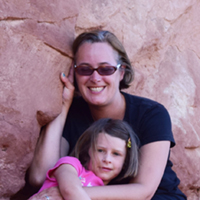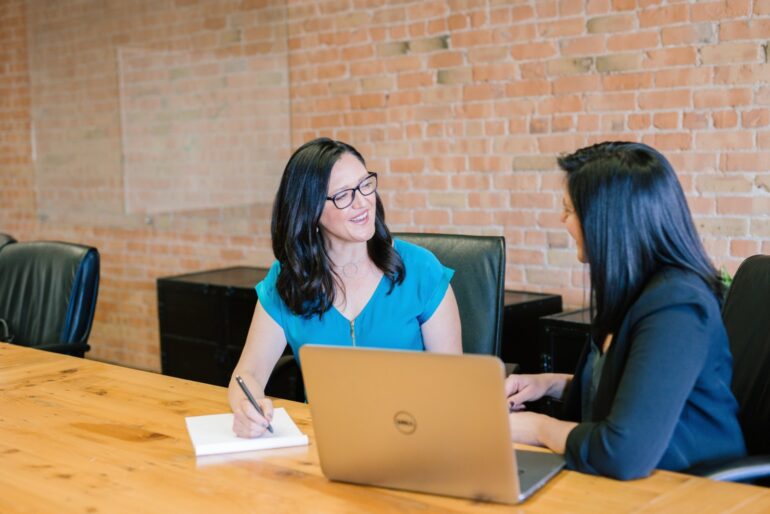Women as a group face many financial challenges. We earn less on average during our careers compared to men, and we compound that shortcoming by investing less. One in five divorced women lives in poverty.
All of these shortfalls send us into retirement with significantly smaller nest eggs than men have — yet we live longer, meaning we actually need more savings to cover our living expenses and medical care in later years.
As grim as all this sounds, financial advisor Helen Abe knows women don’t have to accept being limited by circumstances. She knows this because of her mother, an immigrant who earned just pennies for every piece of cloth she sewed together in a Chinatown sweatshop.
“My mother taught me that it’s not how much you earn, but how much you save that really matters,” Abe says.
In fact, through frugality—no vacations, no toys—Abe’s mother and father were able to save enough from their meager incomes to buy a home for themselves and their five children.
Today, Abe teaches financial literacy for women—in her mother’s honor.
In her College of Marin class, Wi$e Up: Financial Education for Women, Abe teaches women ranging in age from their 20s to their 80s to take control of their financial lives.
“Many of them are reporting back to me that they are now debt free when they thought they could never be,” Abe says. “Some are actually homeowners now. And mostly all of them are wiser.”
You can be wiser too, by following Abe’s top financial tips for women, which she shared in a virtual Fireside Chat with Make It Better Founder and Chief Visionary Officer Susan Noyes on Jan. 12.

1. Live below your means
Every other tip here follows this directive.
2. Figure out your income and expenses
If you are not taking in more than you’re spending, you know you’ve got a problem. The next step is to pinpoint the problem.
3. Use the 50/30/20 rule
This means that out of your take-home pay, half should go to needs, 30 percent to wants, and 20 percent to savings or debt payments.
4. Use categories to pinpoint overspending
For a month or more, track every penny spent, by category. This will help you figure out what you need to change. Some expenses are easy to cut, like canceling a streaming service. Others might require bigger sacrifices. For instance, if housing costs more than 50 percent of your income, you may need to consider getting a roommate.
5. Eliminate credit card debt
High interest rates mean that this kind of debt can snowball and rob you of your financial future. Put every available penny toward credit card payments until the debt is gone. If you have a lot of credit card debt, consider consolidating it with a bank loan in order to reduce your interest rate during the payoff period.
6. Save in both cash and investments
After paying off high-interest-rate debt, your first priority should be to build an emergency fund that covers three to six months of living expenses. Keep this in cash or a cash equivalent (such as Treasury bills or a money market account).
But don’t keep all your savings in cash. Putting money into investments such as mutual funds may seem risky, but cash loses value over time due to inflation. When you invest, it’s like having a second job — except your money, not you, is doing the work.
4. Don’t forget the income part of the equation
If you can’t cut your expenses enough to spend less than you earn, this means you need to earn more money. Consider a second job, a home business, or more training that might qualify you for a promotion.
5. Pay it forward
As soon as you are able, consider helping others through philanthropy. The more you can give away, the more you get back in return.
See the full Fireside Chat below:
More from Better:
- Pre-Teen Mental Health and Social Media Use: 5 Tips for Parents
- Brit Morin is on a Mission to Help Women Realize Their Potential — the Founder, Columnist and Podcaster Shares How With her Latest Venture, Selfmade
- Fashion Designer-Turned-‘Entrepreneur Coach’ Bri Seeley Shares Tips For Achieving Business and Life Goals

Carrie Kirby spends a lot of time asking people about something they think about but rarely talk about: money. Her work on personal finance, business and technology has appeared in San Francisco Magazine, Consumers Digest, Wise Bread and more publications. Carrie’s most recent work about her other love, travel, appears in The Best Women’s Travel Writing: Volume 10. She lives on an island (Alameda) with her husband and three kids, and blogs about getting them all where they need to go without owning a car at carfreemom.com.

